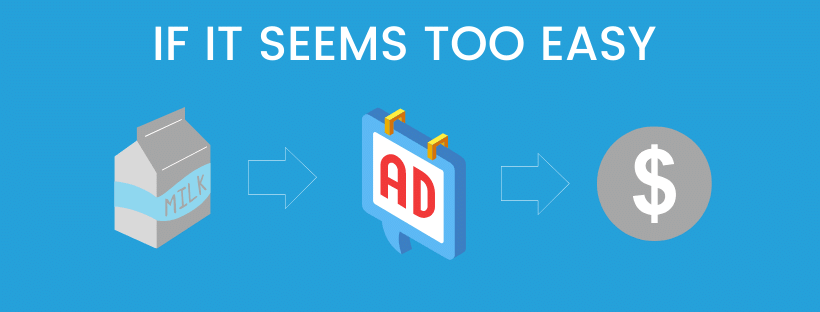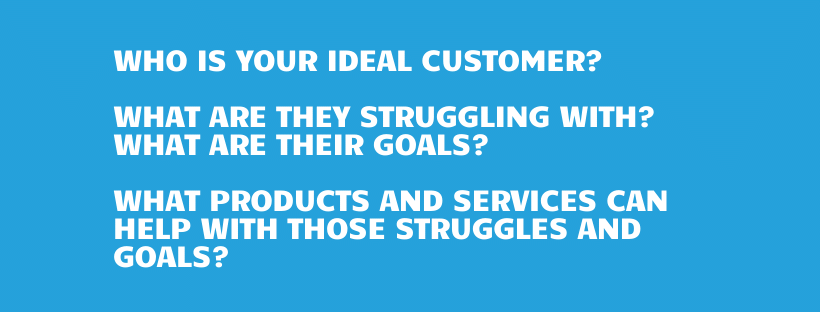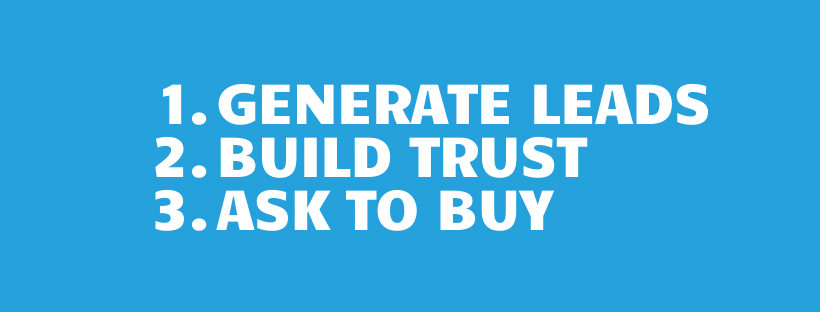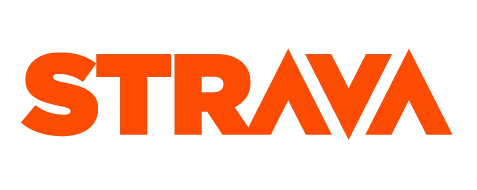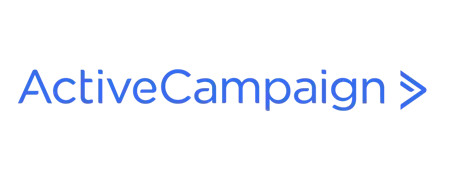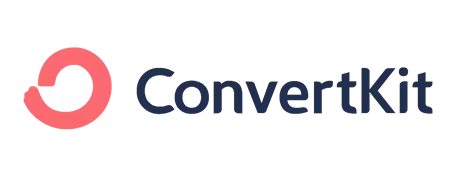Hey, Cam here from Training Tilt. Today, I wanted to talk about some really common mistakes that I see with endurance coaches when they start to do marketing and sales -- online marketing and sales in particular.
Having a lot of conversations with coaches at the moment and everyone is making the same mistakes and wondering why their sales and marketing isn't working.
So, I wanted to talk about the common misconceptions about sales and marketing online. This isn't a criticism because I made exactly these same mistakes when I first created my business.
Video Version
Text Version
How People Think it Works
You create your product.
You do some advertising for that product.
And then you make a sale.
It seems really easy. The fact that it seems really easy should tell you that it's probably not going to work because nothing in business, especially sales and marketing, is easy. If it was easy, everyone would just be selling stuff and everyone would be getting rich.
That's the assumption almost everyone makes before they've tried it -- you create a product, you do some advertising like Facebook ads, and then you make lots of sales. But that's not the case. It's much more difficult than that.
A lot of coaches are doing Facebook advertising and the are thinking 'maybe Facebook advertising doesn't work.'
It's not that it doesn't work at all, it's that you need to approach it in a more structured systematic way that takes the customer on a journey to get them to know like and trust you.
How the Process Actually Works
Define the Problem you are Solving and Identify who you are Solving it For
What actually needs to happen, before you even create your product or service, you need to think about your people. Who do you want your customers to be?
Then, you think about what problems they're having or what goals they have or what are their issues. What are their pain points?
Next, you build your product that solves those problems or helps them reach their goals.
Don't build your product first and then try and sell it.
Pick who you want your ideal customer to be and figure out what their problems and goals are, then build a product that solves those things.
Build Authority and Gain Trust
Don't try to sell this to your customers right away. No one is going to buy something from you unless they first know, like and trust you.
If your selling one on one coaching, you only need to get 20-30 clients. That's quite easy.
But if you're selling training plans and memberships online at lower price points, you need to sell it to hundreds of people. To reach hundreds of people is much harder than it is to reach 20 people.
You need to build trust and authority.
Only once you've done that can you advertise actual products and services. Only then can you start to sell stuff. And that's the basics of it. You can't just create a product, advertise it and sell it.
It just doesn't work.
Decide who your people are, what their problems are, and then build your product around it. Then you build trust -- get them to know, like and trust you. Then you can sell it and then make some money.
That's a long process and it's much harder.
You need to invest a lot of time and effort in learning how all of this works to get to these dollars.
Now that we know that, let's talk a bit more about that process. So, let's skip the bit where you figure out who your customers are, what their problems are and then create the products.
Practically Implementing the Process
Get Them To Know, Like and Trust You. You can't just create a Facebook Ad and say 'I've got this awesome product. Can you come and buy it?' and advertise it an audience on Facebook and expect them to buy it. That doesn't work. Once you've determined the problem you are solving and the customers you are serving you then need to split your sales and marketing into three stages.
1) LEADS: I know that there's a big group of people that might be suitable for my product or service, so I need to somehow find and attract those people.
2) TRUST: Talk to your audience and build trust. There's no point in creating trust until you know the people you should be creating trust with.
3) SALES: You should never ask people to purchase your product or services first.
Generating Leads
YOU NEED A LEAD MAGNET: This is usually something of value you give for free or at a very small price. This should resonate with your customers that you want to buy your products and services. At this point, it's nothing about you trying to sell your products or services. It's giving a valuable item away for free to generate leads. For that, you'll either need a website, a marketing automation tool like an email system like MailChimp, but something more advanced than that. Drip is what we use here at Training Tilt, ActiveCampaign, ConvertCurt or one of those things. That basically allows you to collect people's details and then give them something for free in return. It's like an opt-in for an email.
So, lead generation is you create something for free -- it could be a series of emails, a download or a free training plan.
This is where most people get confused.
You can pay to deliver this free thing to your potential leads. You might be asking, 'why am I paying for something that I'm not selling in terms of ads?" Well, you're paying for leads. You're not saying, 'I'm paying now for people to buy my products and services that's why I'm paying for advertising.' All you're doing is paying for leads. You can throw some Facebook ads at this. At that point, you're not trying to sell anything. You're just saying, 'hey, there's this awesome thing that you could grab for free if you just give me your email address.
So, that's there. That's stage one: Leads.
Building Trust and Authority
Stage two is trust. Once you get here, building the trust is you've created this free thing and you got their email address through a Facebook Ad that clicked to your website. They've opted-in with an email. Then you've sent them this thing through a marketing automation platform or whatever. Now, you can start building trust with them.
You can do that with your Facebook Pixel you've put on your website. You know that people have gone to the page that was the opt-in, gone to the thank you page after they opted in and got this free thing and they gave you their email address. You can that as an audience on Facebook to start showing them some ads. Still, these ads are not trying to sell them anything. This is building the trust stage.
You might have three videos you've created to help you build trust. Again, this is helping them with more of the things they need help with. Whatever your product or service is should be related to that.
What you should do in parallel to that -- because you've collected their email address -- is send them emails over a few days that link out to this content in case they don't see the ads or see your email. Space out the emails to these contents. Run these in parallel -- FB ads for retargeting audiences, and emails to link to the videos that are probably on your website. This will help increase the likelihood that they will see it and that they will learn to know, like and trust you.
Making the Sales
Once that's done, you can then ask them to buy. You can do a Facebook ad again, but this time it's about your product or service. But never over here (LEADS). You're still paying for leads here. Here, (TRUST), you're delivering the content to the leads. You can pay for the retargeting audience here, or send them emails. The great thing about the retargeting audience is this is the big audience -- this is the smaller audience. Here (LEADS) you're just generating leads for people you know would be interested. Here (TRUST) it's only the people you know are interested because they've clicked and given you their email so you know they're much likelier to be a purchaser. You can spend a really low budget like a dollar a day, and that's the minimum you can spend on ads here. And also deliver the emails.
And then ask to buy. Again, you can do it in parallel. Ask them to buy with your Facebook ads using your retargeting audience. There's lots of cool stuff you can do to move people in and out of retargeting audiences using your marketing automation system like Drip. Then, you can delay when they see this Facebook ad.
Of course, you can send them an email as well, which is an ask to buy something. At this point, there's much more likely that they will convert to a paying customer because you've generated leads, you've filtered anyone else that doesn't click or doesn't opt-in, so you're not wasting any money showing them your ads. You're building trust and them finally asking them to buy.
Again, the reality is only a small percent of people who reach this point will buy anyway. That's another common misconception that people think. They think they've got 2,000 people like their Facebook page and that they can sell their products and services to a large percentage of those people. But the reality is for a conversion rate of an audience like that might only be 1%. So that's a very small amount of people. If you had that small audience, then you need to build a bigger audience by lead generation.
Even if they get through the 'Ask' where you might have a slightly higher conversion rate than you would in the 'Trust' process, you will still have to move most of those leads in the 'Ask' to a follow up sequence in your marketing automation system where you could get them more value and build more trust.
Timing is a Big Consideration
The other thing to consider is -- timing. Timing is very important.
You might get people who are interested, but they're not actually ready to pay for coaching or buy a training plan because they're just considering their race or their goals. If they're planning to do a marathon or Ironman, people start thinking about that a long way out, you need to be able to collect them as a lead somehow so when they are ready they'll have been seeing your emails, video and content for a while.
The great thing about email is, while it's not as powerful as it used to be, once people get into email audience, you own that audience.
The thing about Facebook is that they never give you that actual information. You can only reach those people through Facebook, but once they're in the email list, you can reach them anytime you decide it is appropriate to.
Again, if they get to this point and they haven't bought anything, you can put them in a follow-up sequence which will just be a bunch of content you're giving them for free. Over time, you might just send them an email every month with a newsletter or some useful information to help them with their goals and problems. That could be a series of emails. every now and then, one of the emails could be asking them to buy something.
If you just keep giving them more and more value over time -- this could be 6 months down the track or even longer -- just send them an email every month with some useful information to help them with their goals, at some point, if you keep asking them to buy they'll either buy something or they'll opt-out of your emails, which is fine because that just means they were never going to buy anything from you anyway.
Or, they'll just carry on because they trust you and enjoy your content. Who knows? They might even refer a friend to you who is more likely to buy your product and services.
Reality Bites - Doing the Work Gets Results
All of this process probably sounds really complicated, and I probably lost a ton of you a long time ago, but the reality is if you want to build your online business and you want to make sales, this is the complexity you need to get to.
Because otherwise, you'll never achieve what you want.
These are the mistakes that people make. They just think that Facebook or online advertising doesn't work because they spend money on it, and it just appears to be wasted.
But it's because they haven't created the structure.
This not a criticism of coaches. No-one understands the complexity involved in selling online until they actually have to do it. I didn't understand it when I started my business.
I had to learn the hard way.
I did exactly the same thing when I created my online platform, Training Tilt.
I just created some ads trying to sell my software to people, and no one bought it.
It's because I didn't understand this. But, slightly over time I've begun to understand what needs to be put in place.
So, hopefully, that helps you understand why it's much more difficult to sell stuff online than you might have first thought.
Next Steps
You won't be able, from this video, to really apply any of this because there's a lot of detail and a lot of things to know.
This is just to help you understand the concepts and to understand why things might not have been working well up to now.
I'm going to do a series of videos where I'm going to create my own dummy endurance product.
I'm going to go through all of this one step at a time and go through all of the practical details.
So, if you're interested in this keep and eye on my blog.
And make sure you are signed up to the email list here so you'll be notified when my videos and posts go live.
Take our Free "Authentic" Marketing Course for Coaches
Designed for endurance sport coaches. Marketing doesn't need to be pushy. The best marketing simply creates a win-win relationship between you and your customers. Take the simple 6 part course to learn more.


